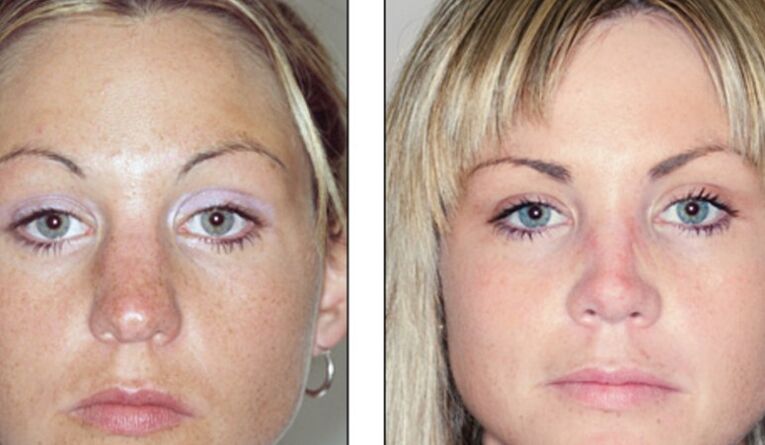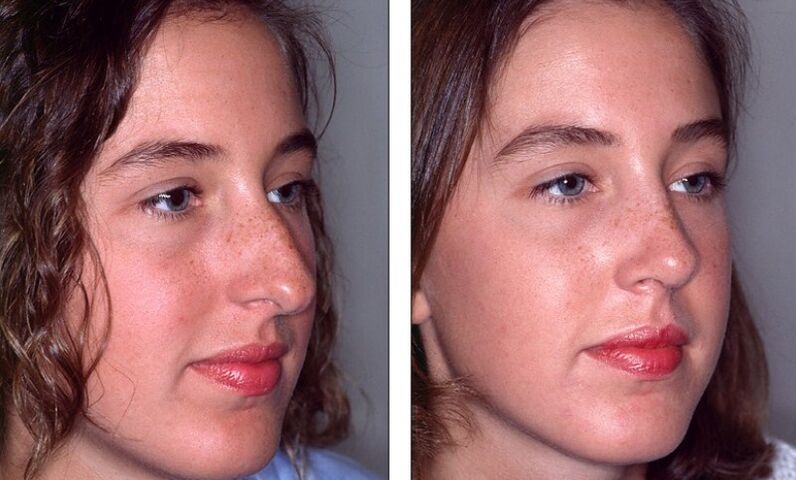If you plan to undergo rhinoplasty, you should definitely familiarize yourself with all the nuances of its implementation. This is quite a popular procedure today, which involves the correction of defects in the nose.

The nose is a fairly complex organ that is responsible for several functions in the body at once. The main ones are the acuity of smell and correct breathing. The location of the nose plays an important role in the appearance, in the center of the face, in which it is difficult to disguise the visual imperfections of the organ.
If you want to change the shape of your nose, the words "failed rhinoplasty" sound intimidating and many questions arise about the operation and the recovery period. In this article we will try to explain as much as possible the possible causes of a failed rhinoplasty and how to avoid it.
How to understand that rhinoplasty of the nose is not successful.
It is easy to guess that with a successful result of the operation, you will get the desired result and a minimum of complications. Failed rhinoplasty is characterized by the presence of serious complications that affect the normal functioning of the patient. And, consequently, the result of the operation does not match what is expected.
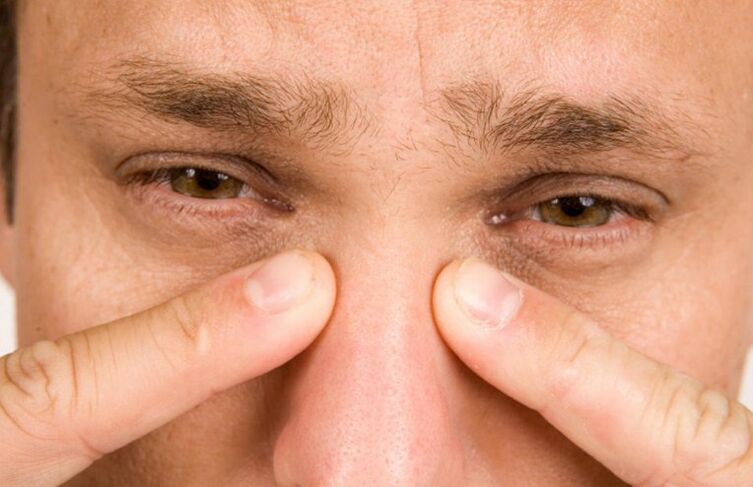
How to differentiate between a failed rhinoplasty:
- pain at the site of the operation does not go away for a long time;
- strong pigmentation is visible on the skin;
- the shape of the nose is asymmetrical, the tip sinks;
- there is no opportunity to breathe fully;
- hemarthrosis;
- swelling that lasts for a long time;
- lack of odor for more than three months;
- the presence of visible scars and scars on the nose.
The full list of complications can occur after rhinoplasty, but they should certainly go away after a certain amount of time.
Note! Full recovery after surgery requires at least six months. Only after the expiration of this period, it is possible to judge the results of the operation.
Throughout the world, rhinoplasty is considered a surgery that carries risks of side effects. Complications that arise during the installation of implants used for reconstruction of the nasal frame are no exception.
Tissue rejection causes cyst formation, atrophy, fibrosis. The most dangerous to the body are infections that can lead to life-threatening anaphylactic shock. The result immediately after surgery and after 6 months may not always be the same.
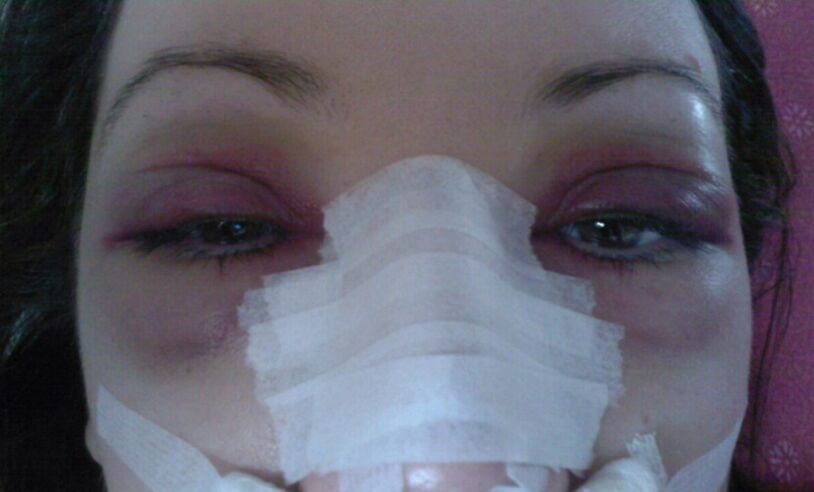
Reasons for failed rhinoplasty surgeries
Although an operation as complex as rhinoplasty has been performed for more than a year, no specialist can guarantee an absolute result until the end. What are the reasons for this:
- A plastic surgeon cannot accurately predict the outcome of rhinoplasty, because each organism behaves individually. We can all heal ourselves in different ways: blood vessels, nerves, nasal bones, cartilage, mucous membranes;
- The result after surgery may change after a year.
- Rehabilitation after rhinoplasty is also individual in nature, so it should be under the supervision of your doctor at all times.
The first reaction after a failed surgery is to blame the doctor. But we recommend that you find out what the reason is - a doctor's mistake or a reaction of the body.
Undoubtedly, a plastic surgeon with extensive experience in rhinoplasty should notice the complications that have arisen and respond to them in time.
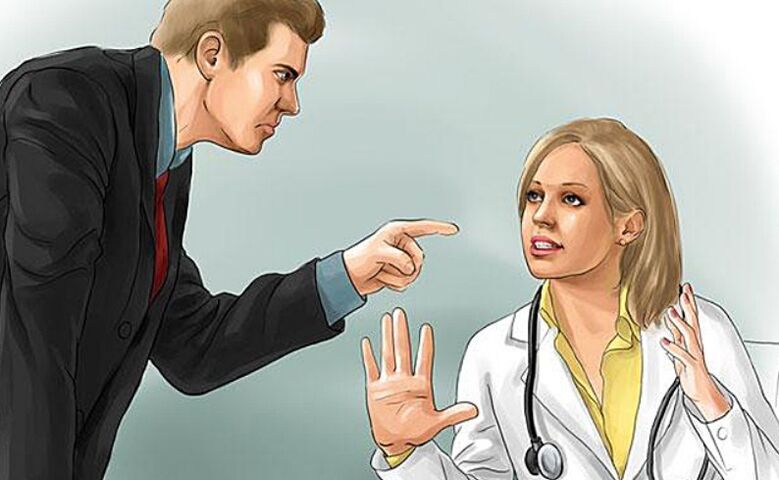
Doctor's mistakes
- During nose hump rhinoplasty, if the surgeon does not perform the operation correctly, a depression may appear in the nose;
- During the operation, exfoliation of the skin may occur, this is fraught with tissue necrosis;
- If the doctor removes too much cartilage or bone tissue from the nose, the organ will appear unnatural as a result;
- During the operation, the doctor changed the size of the wings of the nose. This is a dangerous complication of nasal breathing. As you inhale, the nostrils will stick together;
- If the doctor took the wrong measurements before the rhinoplasty, he can get an asymmetrical nose after the operation.
How to avoid a failed rhinoplasty?
First of all, the choice of clinic and plastic surgeon in which you plan to undergo rhinoplasty is worth considering with the utmost responsibility.

Selection criteria:
- See the actual reviews of operated patients about the hospital and the doctor;
- The low cost of the operation is not a reason to go to this clinic. On the contrary, it serves as a signal about the inexperience of the doctor, or about the lack of the necessary equipment for the operation. But the obviously too high price is a reason to take a closer look at the clinic.
- Beautiful before and after rhinoplasty photos and colorful reviews are not a reason to choose this particular doctor;
- Study the status of the clinic you have chosen. Availability of modern equipment, qualification of employees is required;
- Keep in mind that it is quite difficult to reach a qualified and sought-after doctor. Some plastic surgeons have an appointment a year in advance;
- The extensive experience of the doctor minimizes the unpleasant consequences after the operation;
- Read on the forum about the experience of a failed rhinoplasty. This will help you analyze the mistakes that others have made.
- Take a closer look at the doctor, his way of communicating, his approach to work. This will help assess your level of literacy and professionalism;
- Ideally, choose a clinic and a doctor, who have already operated on one of your true friends.
- The psychological preparation of the patient is of great importance. Remember that it is not realistic to have a completely new nose. Sometimes the expectation of the result can be too high and the disappointment can be bitter.
- Before rhinoplasty, it is necessary to conduct a complete examination of the body and pass all the necessary tests to avoid the risk of complications;
- Remember that there should be no secrets between the doctor and the patient, your health directly depends on this. Be sure to tell your doctor about chronic and recent illnesses;
- A great risk of failed rhinoplasty is caused by the patient's non-compliance with the doctor's prescriptions before and after the operation.
Computer simulation method
The technique does not stop and today there is a great way to see and predict future results. The computer modeling technique will help you try different nose shapes to find an acceptable option. Ideally, your nose should look like the after-image when modeling. But this procedure does not offer a 100% guarantee that the operation will be successful. The result depends mainly on the individual characteristics of the patient and the qualifications of the plastic surgeon.
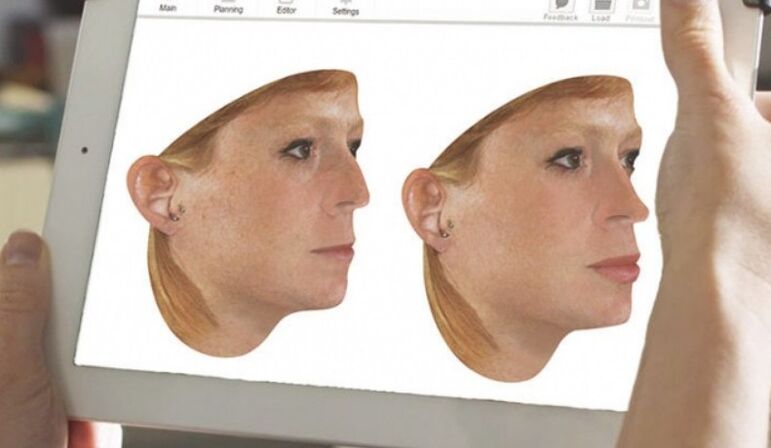
When rhinoplasty is prohibited
In some cases, the operation is strictly prohibited. Violation of the recommendations can lead to serious problems during the procedure and during the rehabilitation period.
Here are the main contraindications to perform:
- diabetes;
- inflammatory and infectious diseases;
- age under 18 years;
- kidney and liver diseases;
- diseases of the cardiovascular system;
- inflammatory process on the skin in the nasal region.
All prohibitions should be discussed with your doctor on an individual basis.
What to do after a failed rhinoplasty
Before going to the operation, you will need to read and sign the documents, which will indicate all possible options for an unfavorable result of the procedure. After rhinoplasty, the first person you will contact is your plastic surgeon. A competent and qualified specialist, in any case, will try to solve the problem peacefully. For a failed rhinoplasty, two people are responsible: the doctor and the patient. The operated person must strictly follow all the doctor's recommendations after the operation. If the doctor is to blame for the failed operation, the clinic is obliged to return the money. To make a return, you must contact the special services that will protect your rights.
How to hold a doctor accountable
If it was still not possible to solve the problem peacefully, and the doctor refused to contact you, it is necessary to draw up a claim outlining all the requirements. Subsequently, the clinic where the operation was performed is obliged to respond to you in writing.
If there is no response to your letter, either written or oral, do not hesitate to go to court. Without a doubt, any clinic worth its salt will respond to your complaint, because its status among clients depends directly on it. However, be prepared for a long test. An independent expert will participate during the investigation, after whose conclusion the decision of the law enforcement agencies will be made.
How to behave correctly before and after rhinoplasty.
Violation of the doctor's prescriptions in preparation for the operation and subsequent inappropriate behavior can reduce all the efforts of the surgeon to zero.
In preparation for rhinoplasty, you should:
- Completely giving up bad habits, such as alcohol and smoking, can lead to poor tissue healing;
- it is forbidden to take drugs that affect blood clotting to prevent bleeding after surgery;
- after rhinoplasty, you can not visit the solarium, sauna, to avoid sudden increases in blood pressure;
- any physical activity is prohibited, especially those in which it is necessary to bow the head;
- Sleeping on a high pillow or with a raised headboard is recommended. This will help reduce swelling and prevent deformity of the nose;
- within a month after rhinoplasty, it is not recommended to consume too cold or hot drinks and dishes;
- for 2 weeks you need to wear a special plaster, which serves as a frame for the nose during the healing period;
- It is forbidden to wear glasses during the rehabilitation period, they can deform the tissues. If necessary, you should wear contact lenses;
- you should not plan a pregnancy for a year after rhinoplasty;
- avoid blowing your nose for 2 months after surgery. To clean your nose, you should use the sprays that your doctor prescribes. Petroleum jelly or peach oil will also help hydrate.
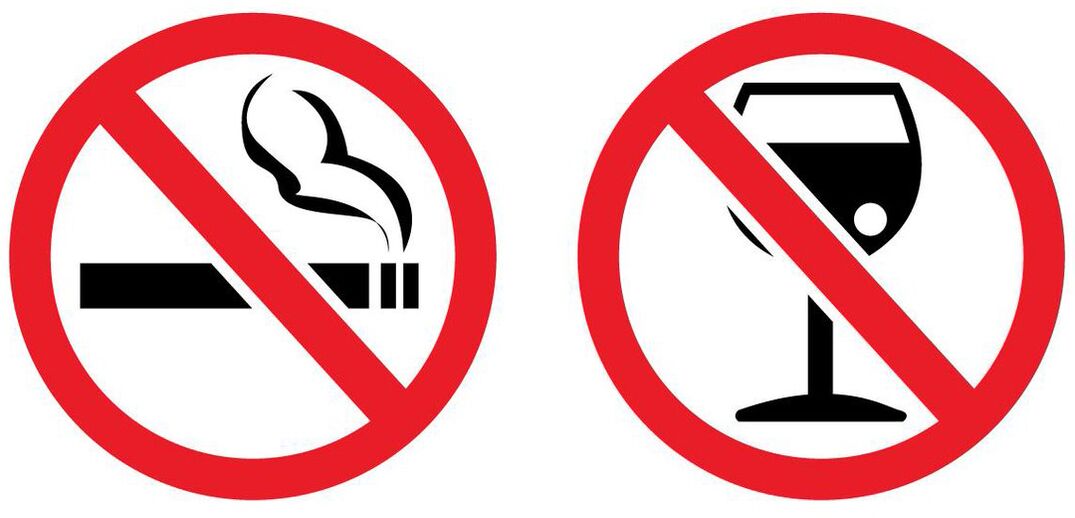
Before rhinoplasty, it is very important to choose an experienced doctor, a highly specialized clinic, and get acquainted with the real opinions of patients. However, the patient is also not exempt from responsibility: it is important to provide honest information about his health, pass all necessary tests and follow the recommendations of doctors. But, even if all these conditions are met, the risk of negative consequences is not excluded.
When to see a doctor for correction
All complications after a failed rhinoplasty are conventionally divided into aesthetic and functional. Basically, for a second rhinoplasty, they are applied if there is pain in the nose, low sensitivity and nasal breathing disorder. The aesthetic appearance of the nose can be affected by asymmetry and deformation.
The main indicators for the appointment of a second operation:
- Excessive or insufficient correction of the initial defect of the nose, in which its functionality was affected;
- Violation of the integrity of the cartilaginous and bone structure, resulting in the formation of scars and adhesions.
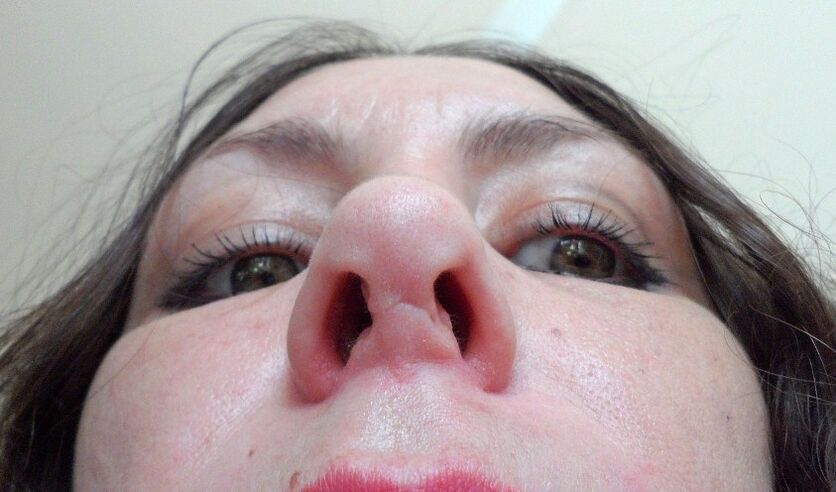
Reconstruction of the nose after a failed rhinoplasty.
If you decide to correct your nose with the same doctor who performs rhinoplasty, you should consult with him and find out the reasons for the complications that have arisen. Next, you must develop a precise plan to carry out the recovery activities.
How long a second rhinoplasty can be performed, the doctor decides. Note that the rehabilitation period lasts long enough, up to six months.
Postoperative recovery methods.
There are several options for correcting a failed rhinoplasty. Which one is right for you depends on the degree of complication and individual characteristics.
- Nose rhinoplasty with fillers- the smoothest shape which will help make the shape more symmetrical. This correction refers to non-surgical rhinoplasty. It also allows you to correct the shape of the nose, smooth the skin. However, the biggest disadvantage of this correction method is the short-term effect. Most likely, in a year or less you will have to repeat this procedure.
- If the deficiencies are clearly visible on your face after the operation, you should resort to the methodcorrective rhinoplasty. . . Today, this is the most common way to correct a failed rhinoplasty. After the operation, an unexpected result is possible, because no one knows exactly how your body will behave after the operation. Corrective rhinoplasty aims to correct minor defects, improve respiratory function, remove scars and scars.
- Revision rhinoplasty. . . This is a radical way of correcting the consequences of the first operation. A full-blown operation, which is legitimately considered more complex than the previous one. This procedure is used to correct the most serious cases. However, miracles should not be expected from revision rhinoplasty, because its main objective is to correct the consequences that affect the normal life of the patient.
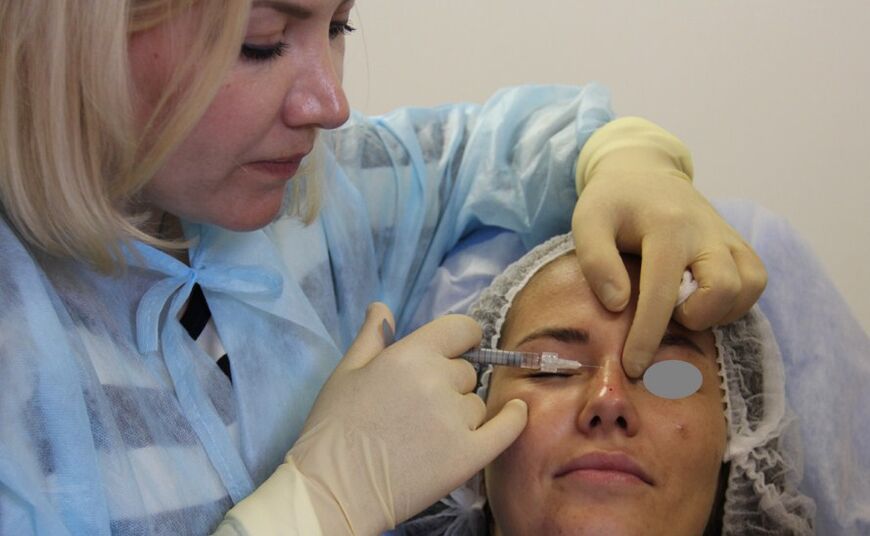
There are many options for correcting a failed operation. Your main task is to react to complications in time and consult a doctor. Due to the fact that rhinoplasty has gained great popularity recently, the possibilities of correcting a failed procedure are also expanding.
There are cases of insufficient patient dissatisfaction after surgery. It is worth remembering that the final result will be clear only at the end of the rehabilitation period, which lasts at least one year. Only after the required period has elapsed can the result of rhinoplasty be fully evaluated. You need to adapt to the new nose, get used to the change in appearance. In the case of functional changes, reoperation is possible no earlier than one year later.
Failed rhinoplasty reviews
"It took me a long time to decide on nose rhinoplasty. I have a congenital hump on my nose, which practically ruined my nerves as a teenager. It seemed to me that I had come to terms with her then, but the idea of the operation haunted me. I took a clinic in our city and decided to correct the hump of the nose in a radical way, with an operation. However, an unpleasant surprise awaited me after the operation, the hump, of course, disappeared, but a depression formed in its place. It seems small, but why do I need it? The surgeon assured me that in the rehabilitation process everything will stabilize. But 2 months passed and the depression persisted. I panicked and connected. It turned out that I was not the only one and there was an error during the operation. I am in the clinic, since they made concessions. I made a second correction, this time with another doctor, and the depression disappeared. It was possible to shake their nerves, of course, and sue, but he just didn't have time to do this. "
Before and after photos of a failed rhinoplasty
Finally, we suggest you look at the photo of failed noses after rhinoplasty. And once again we urge, with all responsibility, to address the choice of a clinic and a doctor for rhinoplasty. And then the risk of complications will be reduced to zero.
